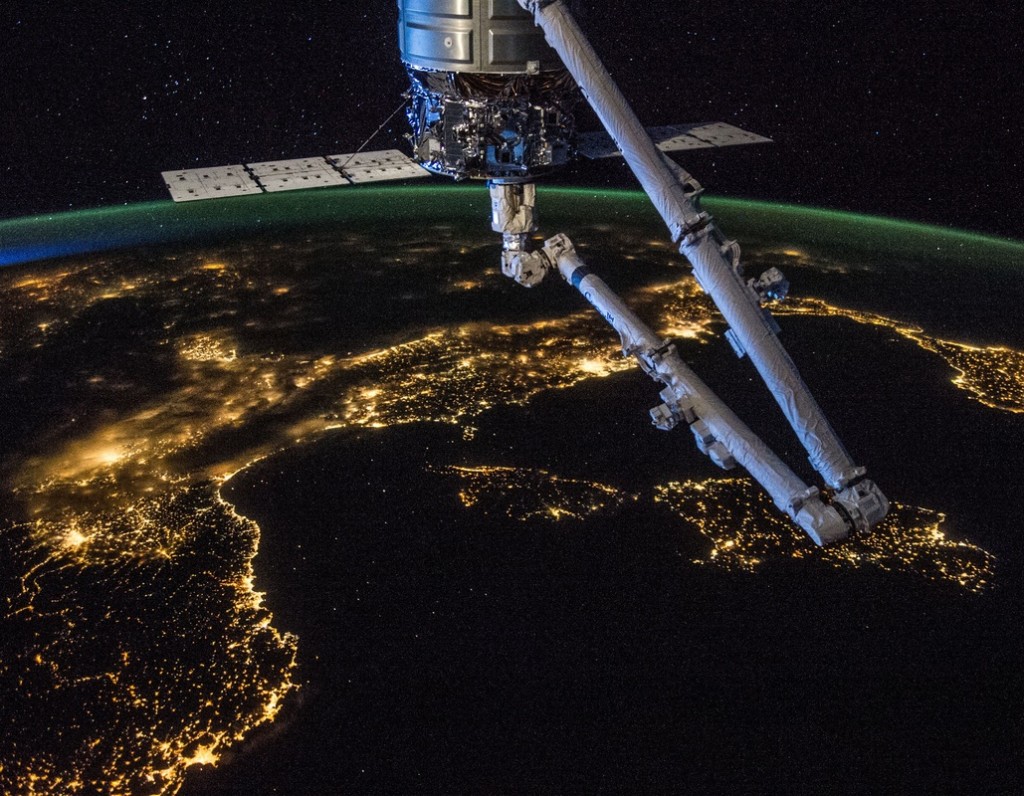Cygnus Spacecraft
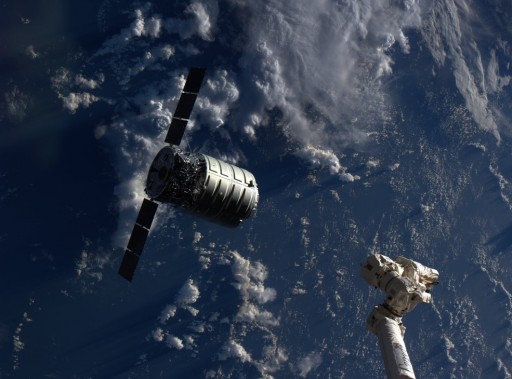
The Cygnus Spacecraft is an unmanned cargo resupply spacecraft designed and operated by Orbital Sciences Corporation.
The Cygnus program started as part of NASA’s Commercial Orbital Transportation Services Program (COTS) and enters the Commercial Resupply Services Program once completing its first demonstration flight.
Cygnus transports pressurized cargo to the International Space Station.
The spacecraft is launched atop Orbital’s Antares rocket lifting off from the Mid-Atlantic Regional Spaceport, Virginia. Cygnus is not capable of returning cargo to Earth and burns up on re-entry to dispose of itself and no-longer-needed items from ISS.
| Standard | Enhanced | |
| Length | 5.14m | 6.39m |
| Diameter | 3.07m | 3.07m |
| Dry Mass | 1,500kg | 1,800kg |
| Pressurized Volume | 18.9m³ | 27m³ |
| Cargo Mass | 2,000kg | 3,500kg |
| Disposal Payload | 1,200kg | 3,500kg |
| Endurance | 2 Months | 66 Days |
| Solar Arrays | Dutch Space | ATK Ultra Flex |
| RNDZ Nav | TriDAR | TriDAR |
Cygnus consists of a Pressurized Cargo Module that is built by Thales Alenia Space of Italy and a Service Module built by Orbital, based on Orbital’s GEOStar Satellite Bus and Dawn spacecraft elements to reduce cost and risk.
Cygnus is booked for a single COTS Demo mission to ISS and a total of eight CRS flights. For its first four flights, Cygnus flies in its standard configuration. When the Antares is upgraded with the Castor 30 XL second stage, Cygnus will transition to its enhanced version to carry more cargo to ISS. Cygnus standard carries 2,000kg of cargo to ISS while the enhanced version has a cargo capability of 3,500kg, limited by launch vehicle performance.
Cygnus can be loaded with over three metric tons of trash and no longer-needed items for its fiery return to Earth.
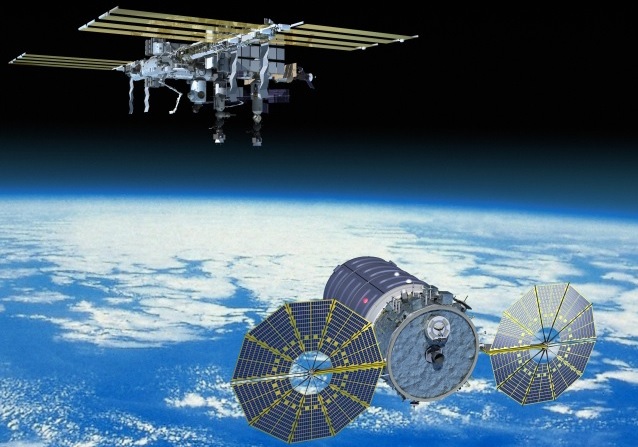
Pressurized Cargo Module
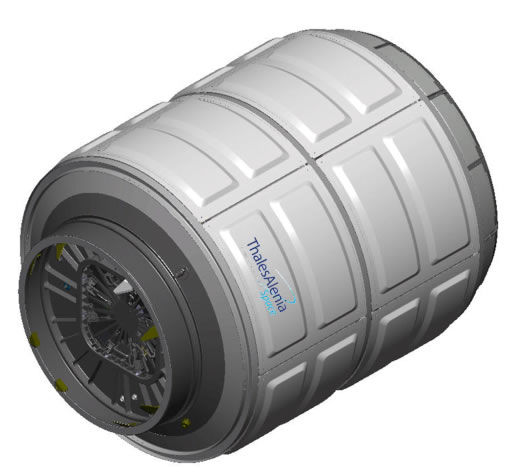
Cygnus standard and Cygnus enhanced use Pressurized Cargo Modules built by Thales Alenia Space, Italy. The module is based on the Multi Purpose Logistics Module that was flown on multiple Space Shuttle Missions to deliver pressurized cargo to ISS.
It is 3.07 meters in diameter and has a length of 3.66 meters in its standard configuration and 5.05 meters with one segment added in the enhanced configuration. The standard PCM has a dry mass of 1,500 Kilograms and the enhanced version weighs 1,800kg. 2,700 Kilograms of cargo can be packed into the standard PCM while the enhanced version allows 800kg more to be loaded. The cargo module has a pressurized volume of 18.9 cubic meters in the standard configuration and 27 cubic meters in the enhanced configuration. Power consumption of the PCM is less than 850 watts.
The PCM features a 94 by 94-centimeter hatch that is integrated in the 127-centimeter Common Berthing Mechanism Ring. As all other visiting vehicles, Cygnus features the passive side of the CBM while ISS is outfitted with an active Common Berthing Mechanism.
The PCM is capable of holding 3,500kg of cargo for disposal via destructive re-entry.
Service Module
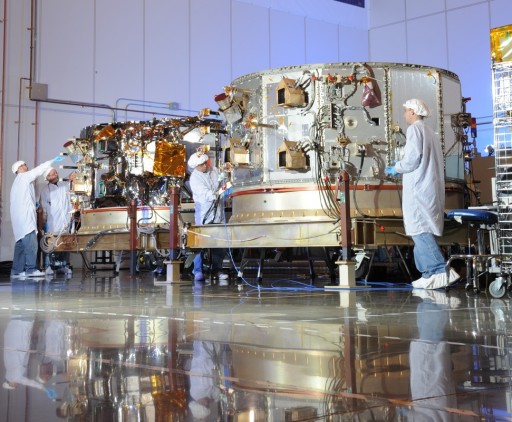
Located in the aft section of the spacecraft, the Cygnus Service Module provides power generation & storage, vehicle control, propulsion, guidance and the Grapple Fixture for the Station’s robotic arm. The SM is based on Orbital’s GEOStar Satellite bus and uses elements of NASA’s Dawn spacecraft that was manufactured by Orbital. it measures 3.23 meters in diameter and 1.29 meters in height.
SM is equipped with deployable solar arrays, batteries and avionics for power generation, storage and distribution. The solar arrays will generate up to 4 Kilowatts of electrical power.
The standard Cygnus sports two three-panel solar arrays provided by Dutch Space. The enhanced Cygnus features Ultra Flex Solar Arrays built by Alliant Techsystems, ATK. The circular arrays are deployed by driving motors and are of a light-wight design of 25% the mass of typical solar arrays consisting of panels. In addition, ATK’s arrays are more compact when stowed. The arrays deliver 3,500 Watts of power when Cygnus is flying in a sun-pointed attitude.
The SM also contains the Main Propulsion and Attitude Control System of the Spacecraft. Cygnus features IHI BT-4 thrusters for orbit adjustment maneuvers. BT-4 was developed by IHI Aerospace, Japan and has a dry mass of 4 kilograms and a length of 0.65 meters. The engine provides 450 Newtons of Thrust using Monomethylhydrazine fuel and Nitrogen Tetroxide Oxidizer. The propellants are stored in spherical tanks that are pressurized with Helium. The Attitude Control System of Cygnus is used for re-orientation and small rendezvous burns using 32 monopropellant thrusters each with a nominal thrust setting of 31 Newtons.
The Service Module is also equipped with the Guidance, Navigation and Control system of the vehicle as well as communications equipment to communicate with ground stations, ISS and the Tracking and Data Relay Satellite System.
Navigation System
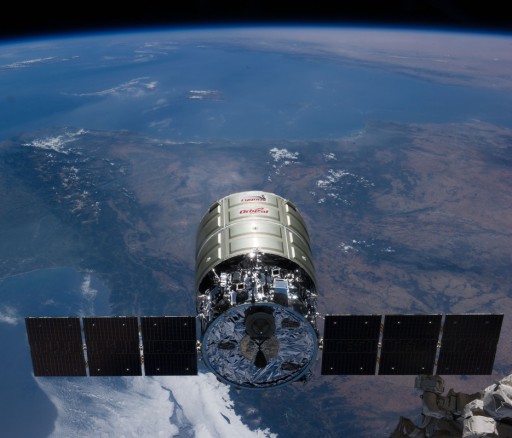
Cygnus is equipped with Star Trackers and absolute GPS system to determine its position in orbit during free flight. During Rendezvous with the International Space Station, Cygnus switches to relative GPS to determine its position relative to ISS. When beginning proximity operations, Cygnus starts using its proximity navigation system.
Cygnus uses a TriDAR system developed by Neptec. TriDAR, or Triangulation and LIDAR Automated Rendezvous and Docking, is a rendezvous navigation system that does not rely on any reference markers positioned on its target. Instead, TriDAR uses a laser-based 3D sensor and thermal imagers to collect 3D data of its target that is compared by software with the known shape of the target spacecraft. This enables TriDAR to calculate relative position, range and relative velocity. The computer algorithm is capable of calculating the 6 Degree Of Freedom (6DOF) relative pose in real time using a More Information Less Data (MILD) approach. “TriDAR operates at distances ranging from 0.5 metres to over 2000 metres without sacrificing speed or precision at either end of the range,” Neptec says on the company’s website.
ISS seen by Tridar
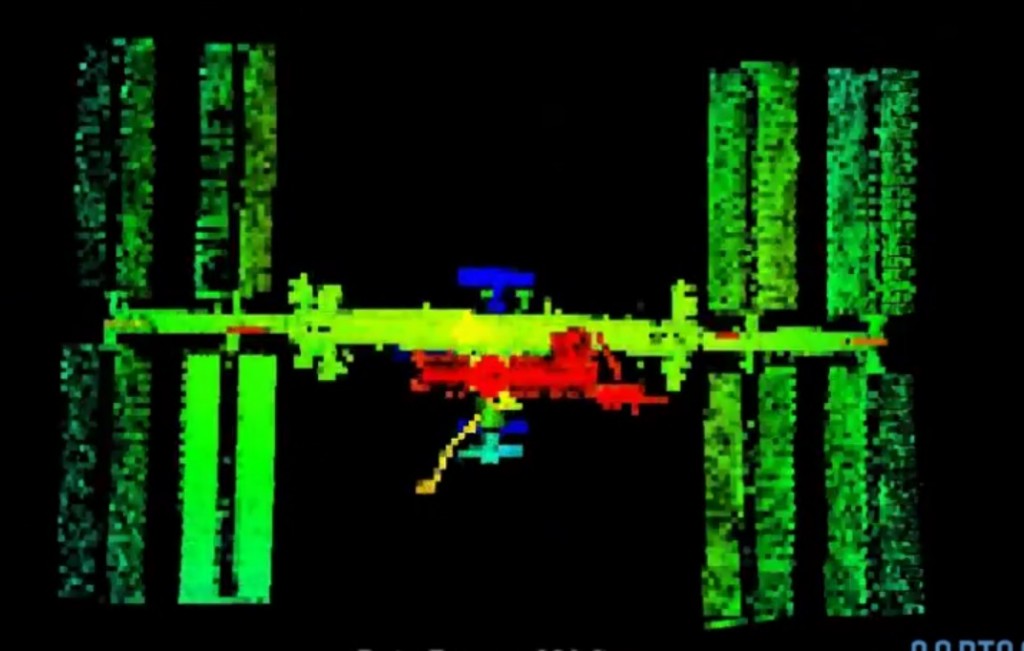
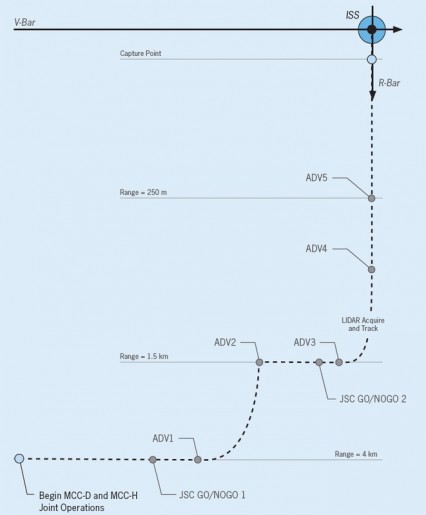
TriDAR’s 3D sensor combines auto-synchronous laser triangulation technology with laser radar (LIDAR) in a single package to provide tracking data at short and long range.
The laser triangulation system is based on the Laser Camera System (LCS) used on the Space Shuttle’s Orbiter Boom Sensor System that was used to perform inspections of the vehicle’s heat shield in orbit.
TriDAR provides the functionality of two 3D scanners by multiplexing the two active subsystem’s optical paths. The thermal imager is used to extend the reach of the system beyond the operational range of LIDAR.
TriDAR was tested in space on Space Shuttle Missions STS-128, STS-131 and the final Shuttle Flight, STS-135.
During STS-135, TriDAR started tracking ISS from 34 Kilometers all the way through docking, and during undocking, the system provided impressive imagery of ISS, providing 3D and thermal imagery of the Station as part of the last Shuttle-based flyaround of ISS.
Flight Profile
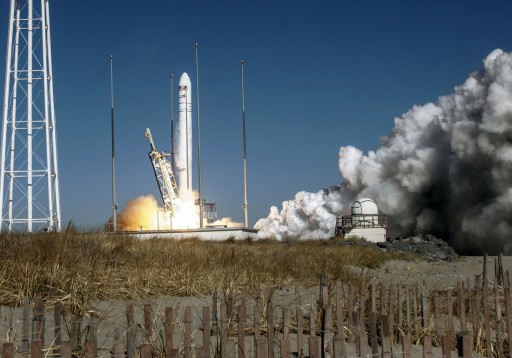
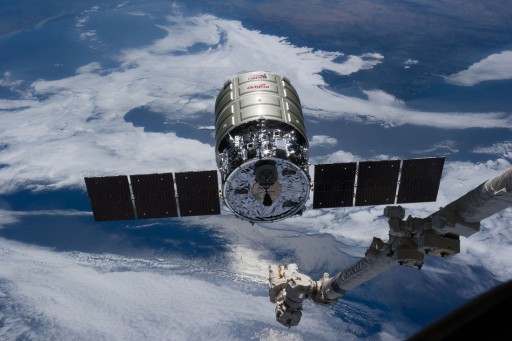
Cygnus is launched atop Orbital’s Antares Rocket that delivers it to a 250 by 275-Kilometer orbit inclined 51.66 degrees 630 seconds after launch. From there, Cygnus begins orbit adjustments and phasing maneuvers in order to link up with ISS that orbits Earth at an altitude of 410 Kilometers. Over the course of the early portion of the flight, Cygnus activates its transmitters and deploys its solar arrays.
Also, the vehicle is put through a number of checkouts to make sure all systems are working as designed. Using star trackers and GPS, Cygnus performs several engine burns to increase its altitude to get close to ISS.
Once in the 28-Kilometer communications zone around ISS, the vehicle switches to relative GPS, communicating with GPS systems of ISS to calculate its relative position to the station. Cygnus approaches ISS on the R-Bar, coming from directly below ISS. As the vehicle gets closer to ISS, it switches to its TriDAR proximity navigation system to continue through final approach.
The crew members aboard ISS can interact with Cygnus via the Crew Command Panel should anything off-nominal occur during the Rendezvous. Once reaching a point 10 meters from ISS, Cygnus stops its approach and enters Free Drift in order to be captured by Canadarm2. The space station’s robotic arm is controlled by ISS crew members to grapple the spacecraft.
Once grappled, Cygnus is berthed to the nadir CBM of the Harmony module of ISS. Once secured in place, leak checks are completed and hatches between ISS and Cygnus are opened to allow crew members to access the cargo module. Over the course of its docked mission, typically 30 days, crew members move cargo from Cygnus to ISS and load the vehicle with trash and no-longer needed items.
Once hatches are closed again, Canadarm2 moves Cygnus back out to 10 meters and releases the vehicle that then performs a number of engine burns to depart the vicinity of ISS. Once at a safe distance, Cygnus performs its deorbit burn to re-enter the atmosphere over the Pacific Ocean. During re-entry, the vehicle breaks up and burns up to some extent before surviving fragments fall into the Pacific, far away from populated land masses.
